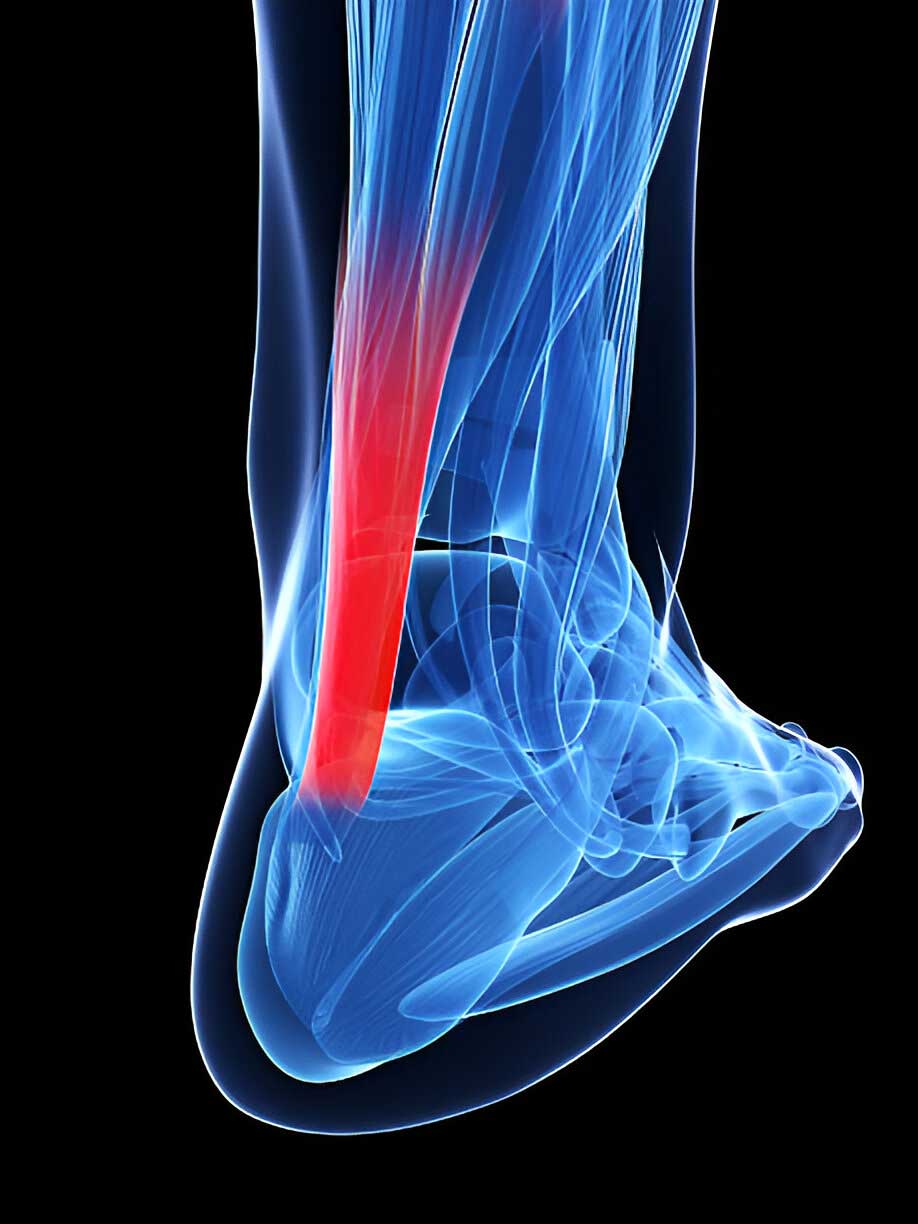Achilles tendonitis is a common condition that can lead to severe heel pain. It typically results from the overuse of the Achilles tendon, a strip of tissue that connects the calf muscle to the heel bone. It most commonly affects runners or middle-aged people who suddenly increase their level of activity. While mild cases can typically be treated with at-home care, severe cases may require more intense treatment such as surgery. Fortunately, because the condition is so common, there has been a significant amount of research conducted on using stem cell therapy to help Achilles tendonitis patients and the results have been promising.
Unlike a torn Achilles tendon, Achilles tendonitis pain tends to come on slowly and begins to increase with time. Patients may notice a mild ache above the heel after running or intense physical activity. The longer the physical activity, the more intense the pain tends to be. It is also common for patients to experience stiffness in the morning which eases as their bodies get warmed up. If you experience sudden and severe pain, you should visit a physician immediately as this is a sign of a tear of the tendon.

While certain risk factors make a person more prone to Achilles tendonitis such as being male, being older in age, having flat feet or pre-existing medical conditions, anyone can develop Achilles tendonitis at any time. Once Achilles tendonitis develops, it makes a person more prone to a tear later on down the road. Slowly increasing your activity level, wearing the correct shoes while training, stretching daily, and strengthening your calf muscles can all help to prevent Achilles tendonitis from developing.
Once you have been diagnosed with Achilles tendonitis, there are a few treatments that can help with the symptoms. This includes over the counter pain medication, physical therapy, orthotics, and in severe cases, surgery. Unfortunately, pain medication and physical therapy help temporarily, but many patients still complain of severe pain after these conservative treatments. However, many patients do not want to undergo surgery due to the risks. Fortunately, stem cell therapy has been effective in helping to reduce and eliminate pain due to Achilles tendonitis by addressing the underlying problems. When stem cells are injected into the damaged tendon, they harness the body’s natural healing power to repair and regenerate damaged tissue, thus reducing or eliminating the pain.
Achilles tendonitis can become extremely painful over time. In addition, it makes patients much more prone to a complete Achilles tear. Patients who are diagnosed with Achilles tendonitis are typically upset with the diagnosis because they enjoy being active. Stem cell therapy can help these patients to recover quicker and with fewer risks than current treatment methods. The Achilles tendon is one of the most important parts of the body when it comes to working out and staying active. It allows people to run, jump, and walk properly. Stem cell therapy can help athletes and everyday people who enjoy staying active get back to their training routines quicker than ever.
Contact US

Dr. David Greene
MD, PhD, MBA
Dr. David Greene, MD, PhD, MBA, is a pioneering leader in regenerative medicine and healthcare marketing. As a residency and fellowship-trained orthopedic surgeon, Dr. Greene transitioned from clinical practice to become the founder and CEO of R3 Stem Cell and US Lead Network, where he has revolutionized patient care and medical practice growth through innovative therapies and digital marketing strategies. He has authored two influential books on healthcare internet marketing, ranks among the top expert authors globally, and has been featured on the cover of Corporate Vision magazine for his impact on global regenerative therapies. Beyond his professional achievements, Dr. Greene is passionate about education, compassion, and continuous innovation.

No Comments